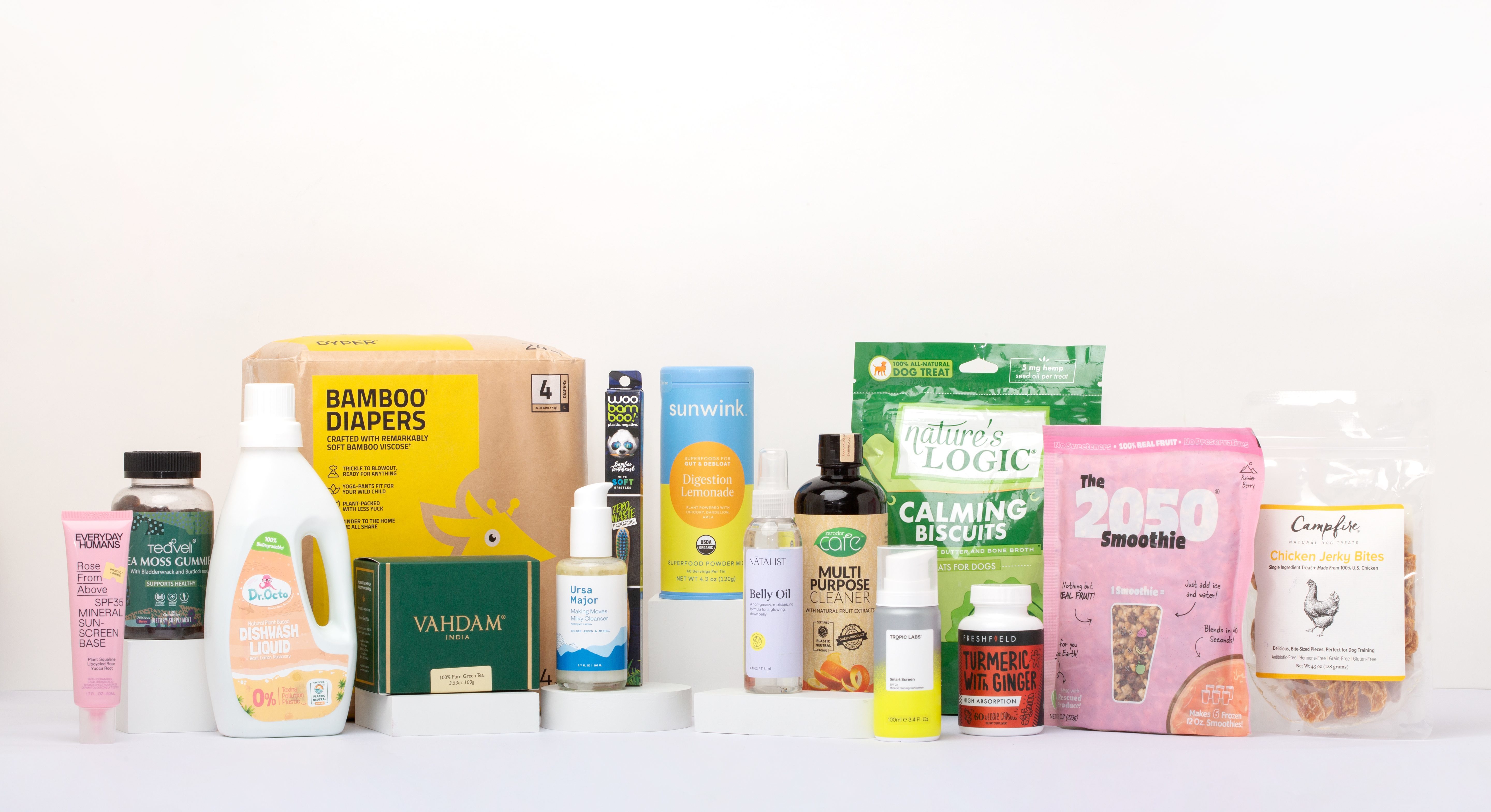BREAKING: Brands Need to Register for California's EPR Program by September 5
Bringing you the latest: We're continuously monitoring CAA communications to registered producers to bring you critical compliance information as soon as it's available. Many of these updates aren't widely public yet, and even registered producers often miss key details that could impact their compliance strategy. Follow us on LinkedIn to make sure you're first to hear about these critical updates.
Key Updates Summary
BREAKING: CAA just released detailed California EPR registration requirements. Registration opened August 1st and companies must register by September 5th. The process is significantly more complex than Oregon or Colorado (the first two states to enact EPR laws). New subsidiary reporting requirements could impact your compliance strategy and costs for years.
EPR Overview
New to EPR? Here's a quick summary to get you up to speed on the basics.
Who: CPG brands selling over $1 million annually in California with covered packaging materials (plastic, paper, glass, metal, and compostable materials).
What: You must register your company with the Circular Action Alliance (CAA), the primary Producer Responsibility Organization (PRO) for all US EPR programs. Unlike other states, California requires each registered producer to report individually—no consolidated reporting exemptions available.
When: Register with CAA by September 5, 2025. Submit 2023 packaging data by November 15, 2025 after signing your California Interim State Addendum (CAISA) in September-October.
Where: California (following Oregon and Colorado, with more states to follow in 2026).
Why: Think of it as "you packaged it, you manage it." Companies report packaging data and eventually pay fees to support waste management infrastructure.
New to EPR? Read our complete guide: Understanding Extended Producer Responsibility (EPR): What CPG Companies Need to Know or Take the 5-Minute EPR Risk Assessment to see if your company is liable.
California's EPR Complexity: What Makes It Different
If you breezed through Oregon or Colorado registration thinking California would be the same, think again. California's approach introduces several complexities that could significantly impact your compliance strategy and costs.
The Subsidiary Decision: A Complex Choice With Long-Term Impact
Here's the critical choice: If your company has parent companies, subsidiaries, or affiliates, each entity must determine whether they qualify as one producer or multiple producers under California law. This decision is entirely up to you—but choose carefully, because California regulators will expect reports accordingly.
Why this matters: Unlike Colorado and Oregon, which offered "consolidated reporting exemptions" allowing separately registered companies to report together, California expects individual reports from every registered producer. No exceptions.
What's at stake: This isn't just a simple registration choice—it's a strategic decision that affects data collection, reporting workflows, and administrative overhead for years to come. Registering multiple subsidiaries separately means managing separate data streams, report submissions, and compliance timelines for each entity.
Two Reporting Paths: Choose Wisely
When you register, you'll face another critical decision: PRO Reporting (CAA manages everything) or Self Reporting (you handle CalRecycle submission directly).
CAA strongly recommends PRO Reporting for good reason—they'll manage your submission to CalRecycle," reducing your administrative burden while ensuring compliance accuracy.
California's Broader Scope: Don't Miss B2B Packaging
California's EPR program includes B2B packaging that doesn't end up in residential waste streams—a broader scope than Colorado’s recent reporting requirements. Make sure you're capturing packaging data that other states might exclude:
- All SKUs sold or distributed into California using covered materials
- Both consumer and B2B packaging
- Plastic, paper, glass, metal, and compostable materials
6 Steps to Get Started on California EPR
1. Determine If You're an Obligated Producer
Before you register, confirm whether your company meets California's producer definition. Producer definitions vary by state, so even if you're compliant in Oregon or Colorado, you need to verify your California obligations.
How rePurpose helps: Take our 5-Minute EPR Risk Assessment to quickly determine your obligations across all EPR states, including California's specific requirements.
2. Complete Your CAA National Registration First
If you haven't already registered with CAA nationally and signed their Producer Participant Agreement, do this immediately. Companies that reported for Oregon and/or Colorado can access California registration directly through their existing CAA portal.
How rePurpose helps: Our team guides you through the CAA registration process and ensures you have all necessary documentation in place before California's deadline.
3. Determine Your Producer Structure
Before you click "register," map out your corporate structure:
- Which entities qualify as producers under California law?
- Would consolidating under one producer entity reduce overall costs?
- Do you need legal consultation to optimize your structure?
Pro tip: This decision affects everything from data collection to future fee calculations. Get it right now.
How rePurpose helps: We analyze your corporate structure and provide strategic recommendations on optimal producer registration to minimize compliance costs and administrative burden.
4. Complete California State Registration
In the CAA portal, navigate to State Registration and register for California. You'll need to:
- Confirm CAA as your PRO in California
- Provide a California business address
- Choose PRO Reporting vs. Self Reporting (choose PRO)
How rePurpose helps: Our team walks you through each registration requirement and answers questions as needed.
5. Sign your California Addendum
CAA will send your California Interim State Addendum (CAISA) for signature between September and October. You cannot submit reports until this is signed.
How rePurpose helps: We track all regulatory deadlines and send automated reminders to ensure your CAISA is signed on time, keeping your compliance timeline on track.
6. Submit Your 2023 Data by November 15
The reporting portal opens September 15, 2025. Have your baseline data organized and ready to input when detailed guidance becomes available. This baseline data will inform California's program plan and fee structure development—the better your data quality, the more accurate future fee calculations will be.
Looking ahead to 2026, you'll also need to develop individualized plastic reduction plans to reach California's collective 25% plastic reduction target by 2032. The data you report by November will be used to set your baseline and develop a reduction plan.
How rePurpose helps: Our platform automatically categorizes your packaging data according to California's specific requirements, generates compliant reports, and provides fee estimation. We also help you develop and track your plastic reduction plans for 2026 compliance.
Timeline Summary
September 5: Registration deadline - complete your CAA registration for California before this date to avoid compliance delays.
September 15: CAA's reporting portal opens with comprehensive guidance on California's unique reporting categories.
September-October: CAA sends CAISA documents for signature to your authorized representative.
November 15: Submit your 2023 California packaging supply volume data to establish your compliance foundation and avoid market access restrictions.
2026: Begin developing individualized plastic reduction plans. California requires brands to create these plans to reach a collective 25% plastic reduction by 2032. Report your 2025 California packaging supply volume data by May 2026.
2027: Fees due based on 2025 sales data (not this 2023 baseline data), and the California EPR program begins implementation.
Why Acting Now Sets You Up for Success
Companies that organize their data and compliance processes during this "registration and baseline" phase will have significant advantages:
Future proofing: The systems you build for California will scale to handle the 7+ additional states with EPR reporting requirements through 2026.
Cost optimization: Early compliance establishes baseline data quality that directly impacts fee calculations. Better data often means lower fees.
Risk mitigation: Avoid potential market access restrictions in the nation's largest state economy and administrative actions once final rules are in place.
Navigate Complexity with Expert Support
California's EPR doesn't have to overwhelm your team. The rePurpose platform transforms multi-state packaging compliance complexity into a streamlined process that saves time, money, and stress.
Save Time & Money: Upload your packaging data once and our platform handles the rest. Our algorithms automatically optimize reporting to minimize fees while ensuring accuracy across all 90+ regulations we cover.
Simplify Registration & Reporting: Our built-in error detection catches issues before they become costly problems. Our guided onboarding and automated report generation handle formatting and submission requirements for each state's unique needs.
Access Expert Regulatory Intelligence: As requirements change across states, our platform updates automatically, flagging new compliance issues and surfacing requirements you need to know. From data validation to final report submission, our white glove approach means you focus on your business while we handle regulatory complexity.
The impact for companies like yours:
- $50,000-$120,000/year saved in consultant fees or avoided headcount
- Up to $25,000/day in potential fines avoided through compliance
- Customers typically reduce their packaging compliance costs significantly
- One platform covers 90+ regulations including all EPR states
Ready to get compliant? Contact our team to learn how the rePurpose platform can simplify and streamline regulatory complexity.
For more regulatory intelligence and compliance guidance, explore our regulatory resource library.
Get Started with Verified Plastic Recovery for your Brand
Get Started with Packaging EPR Compliance for your Brand
rePurpose Global is here to support your sustainability roadmap with impactful and measurable Plastic Action solutions that deliver immediate results. Partner with us to measure your plastic footprint, fund plastic waste recovery, and create strong sustainability messaging for your brand.
Talk to our team to explore how we can work together.
rePurpose Global's EPR compliance platform is here to support you in preparing for the upcoming regulations in multiple states in the US and comply with no errors. Partner with us to create detailed assessment reports, pre-empt fees and reduce time & cost involved in the process.
Talk to our team to explore how we can work together.

Related Posts
EPR Foundations: What is Eco-Modulation?
Learn how eco-modulation incentivizes sustainable packaging by rewarding producers who use low-impact materials in EPR systems.
The March 31st Oregon EPR Deadline: Why SMBs Must Act Now
Oregon’s EPR deadline is March 31. Learn how SMBs can stay compliant, avoid penalties, and simplify reporting with rePurpose Global.
Unique Challenges SMBs Face in EPR Compliance
SMBs face challenges with EPR. Learn how to navigate packaging rules, streamline compliance, and build sustainable business practices.

.jpg)
.png)



.png)







